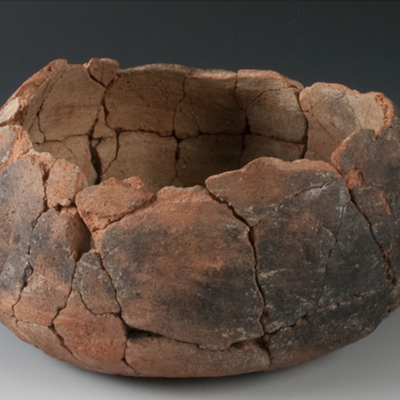This story is part of our 2014 health issue, which also includes articles on concussions in young athletes, rhabdomyolysis, and gluten intolerance.
Just over four years ago, the U.S. Preventive Services Task Force—an independent, federally funded panel of physicians—rocked the cancer community when it changed its breast cancer screening guidelines, recommending that women get mammograms every other year starting at age 50, instead of annually starting at age 40.
The decision, based on a growing understanding of mammography’s flaws as a detection method, ignited a firestorm of debate over costs and benefits in medicine. Both UVA Medical Center and Martha Jefferson Hospital have stuck with the old guidelines, but doctors who are fighting breast cancer from different corners—radiology, surgery—say they aren’t ignoring the complexities inherent in seeking and treating the disease.
Dr. Peter Ham is a family medicine specialist and a UVA associate professor who teaches information mastery classes to medical students—courses that aim to instruct future doctors in how to weigh information gleaned from scientific studies and statistical analyses. Understanding the controversy over breast cancer screening comes down to some very basic principles, he said.
“There are three sins a doctor can commit,” he said. Physicians can mistreat a patient—diagnose them wrong and give them the wrong therapy. They can undertreat somebody. Then there’s overtreatment—ordering tests and procedures that don’t do any good.
“I see us really happy to address the undertreatment,” he said. “That means more medical care, and that’s good for us as a hospital and an institution. And we can call that quality. But we have to address the overtreatment.”
And when it comes to breast cancer, overtreatment is a real problem. Women have long been told early detection saves lives—and it does, just not as many as we previously thought.
In the last decade, major medical journal studies have shown that while annual mammograms are good at detecting early-stage breast cancer, their widespread use hasn’t translated to a reduction in the rate of advanced cancer, and has very little effect on the rate of death from breast cancer. In other words, the false-positive rate in mammography is high, and lots of women are getting diagnosed with—and likely treated for—cancers that wouldn’t have killed them anyway.
Besides driving up health care costs, overtreatment means patients are unnecessarily exposed to invasive and potentially harmful procedures. Overdiagnosis inflates survival rates, and, some argue, skew our cultural understanding of the disease. It’s hard to weigh stats against personal stories of survival.
“The person who is diagnosed with a breast cancer that never would have hurt them is probably out running the women’s 4-miler for breast cancer awareness,” said Ham. “They’ve got a real emotional stake in that. To label them as overdiagnosed, that’s using epidemiological speak, and you’re contradicting somebody’s emotional reality.”
Which isn’t to say that peoples’ emotions shouldn’t play a role in determining their care. “We’re not robots,” Ham said. “We don’t just want to hear statistics and plug them into a calculator. People are allowed to have their emotional, personal stories play a factor in what they do.”
So how do doctors who diagnose and treat breast cancer decide what to recommend?
“We talk about it all the time,” said Dr. Lynn Dengel, a breast surgical oncologist at Martha Jefferson Hospital’s Virginia Breast Care. Oncologists and radiologists at her hospital regularly come together to discuss studies and reach consensus on a range of treatment questions, she said. And at Martha Jefferson, doctors have stuck with the recommendation to conduct annual screening mammograms for women starting at age 40.
One key reason, Dengel said, is that cancers in younger women are more likely to be the aggressive, fast-growing type. They might not be the most common across the board, but they’re the ones where a year of undetected growth can make a real difference in survivability.
And then there’s the fact that mammograms are about more than trying to prevent death.
“If you detect a cancer at an earlier stage, you may be able to offer a woman breast conservation,” said Dengel, while if you catch it later, a mastectomy might be unavoidable. And that’s the problem with looking too narrowly at the benefits of screening. “Two women might have the same survival rate, but different quality of life,” she said.
Across town at UVA Medical Center, Dr. Jennifer Harvey, a professor of radiology and head of the medical center’s Division of Breast Imaging, makes the same recommendation of annual screening at 40 to her patients. There’s a statistical argument in her favor, she said: the cost of quality-adjusted life years saved.
“It’s basically a balance between the cost of scanning a large number of women and how many cancers you’re going to find,” she said. You’re going to detect fewer cancers in women in their 40s, she said, so it’s true that the cost per cancer detected is higher for that age group. But the payoff is significant for those women. “It’s a higher number of years of life saved,” Harvey said.
Both doctors agree that mammography isn’t perfect, but that doesn’t mean they’re pessimistic about medicine’s ability to combat breast cancer. Far from it.
For starters, said Harvey, technology is always advancing. UVA now uses tomosynthesis in breast imaging, a 3D scanning process that allows radiologists to recognize and “see behind” areas of dense or overlapping breast tissue that might show up as ambiguous blobs on a one-dimensional mammogram. That means more hard-to-find cancers detected, said Harvey, but it also means fewer false positives and unnecessary biopsies.
And with time and a bigger data pool comes a better understanding of the disease. Harvey is currently leading a study of 3,500 women that examines a wide range of risk factors with the goal of creating a new risk assessment model—something that’s been hard to nail down for breast cancer in the past.
“Right now, we’re not very good at saying, ‘You’re low-enough risk that you can wait till you’re 50, or screen every three years,’” Harvey said. “We really have sort of a one-size-fits-all approach to screening, and we tend to overcompensate.” But her hope is that their data will fill in some of those gaps. “We’ll be able to help women find better methods,” she said.
Even if there are still big gray areas when it comes to risk, that patient-doctor conversation is critical, according to Dengel. It’s more important than ever when it comes to breast cancer, precisely because there are conflicting recommendations for screening floating around the medical community. The doctor’s office is where concerns about overdiagnosis crash head-on into fear of that diagnosis. The thoughtful discussion of both is what elevates medicine from an art to a science, Dengel said.
“One of the things I love about my job is that counseling conversation, because it’s not the same for every woman,” she said. “It’s my job to educate them and have the conversation, but they’re the one making the decision. Some women have very strong opinions about that, which I’m all for.”—Graelyn Brashear
“We really have sort of a one-size-fits-all approach to screening, and we tend to overcompensate,” said UVA’s Dr. Jennifer Harvey. But with better understanding of risk factors, “we’ll be able to help women find better methods.”





